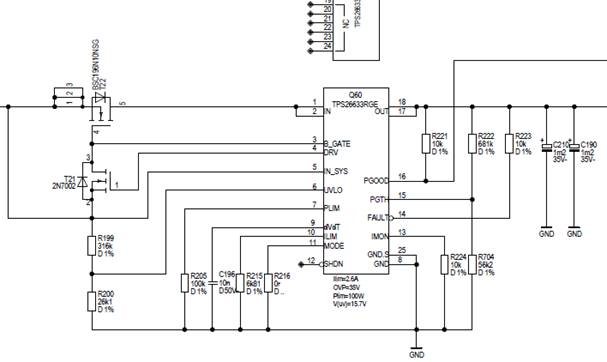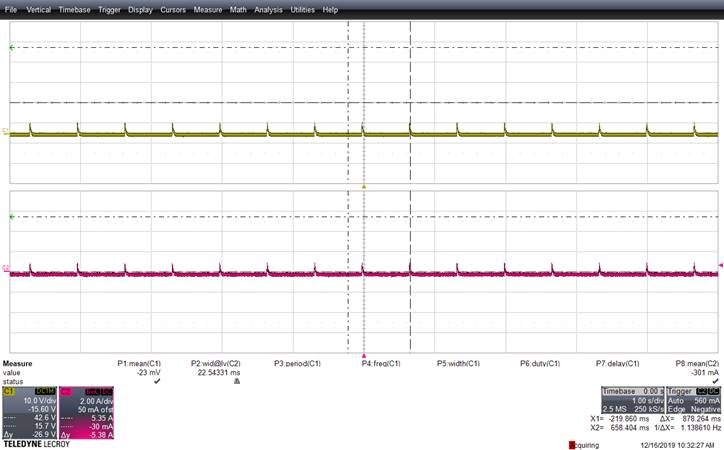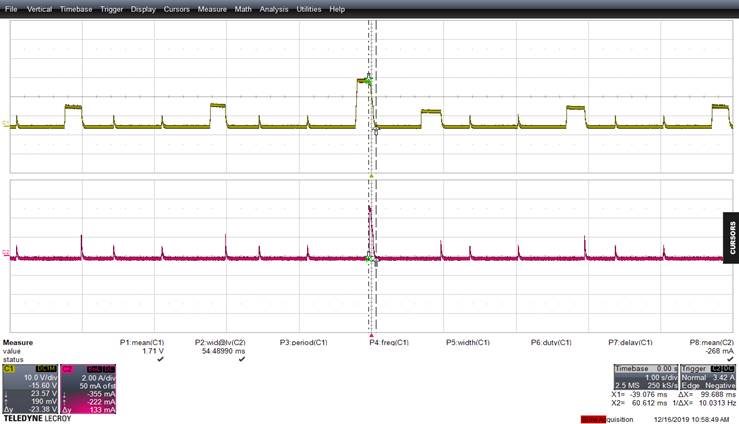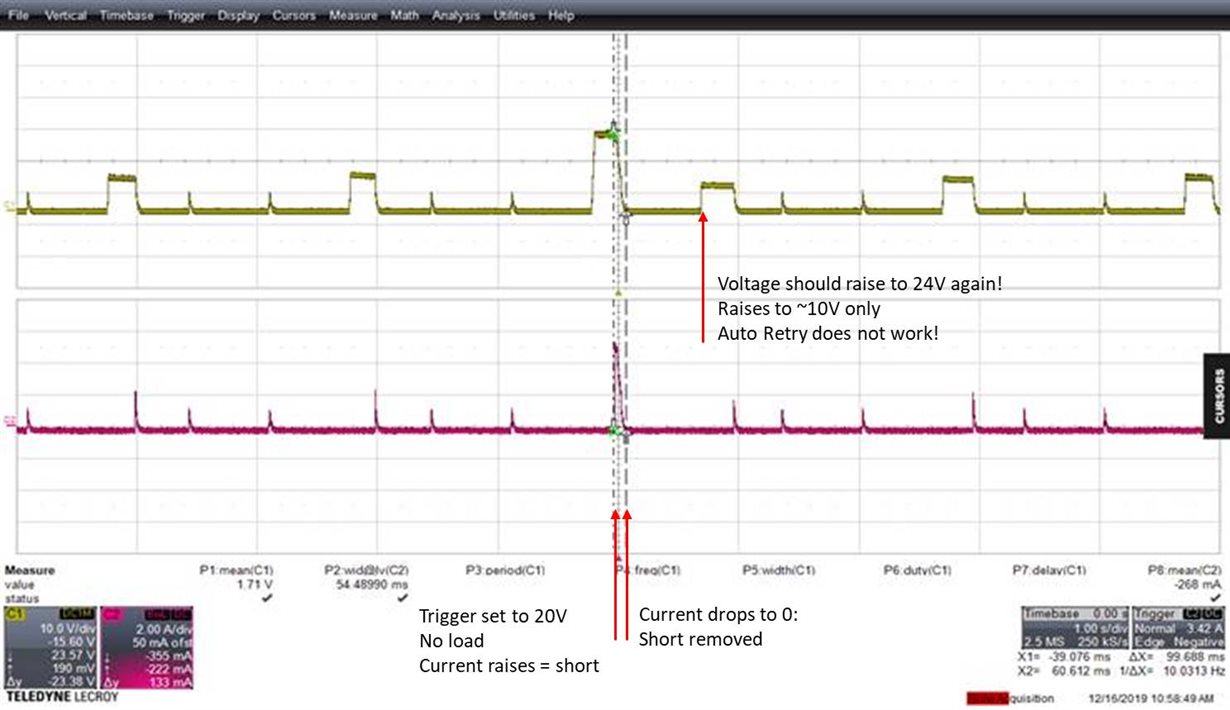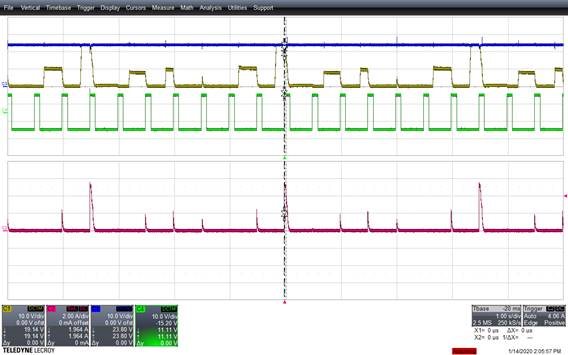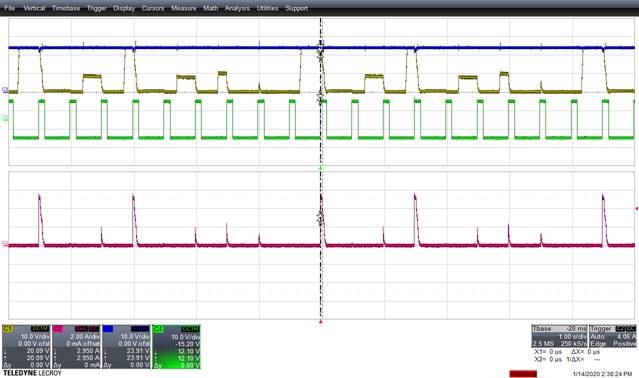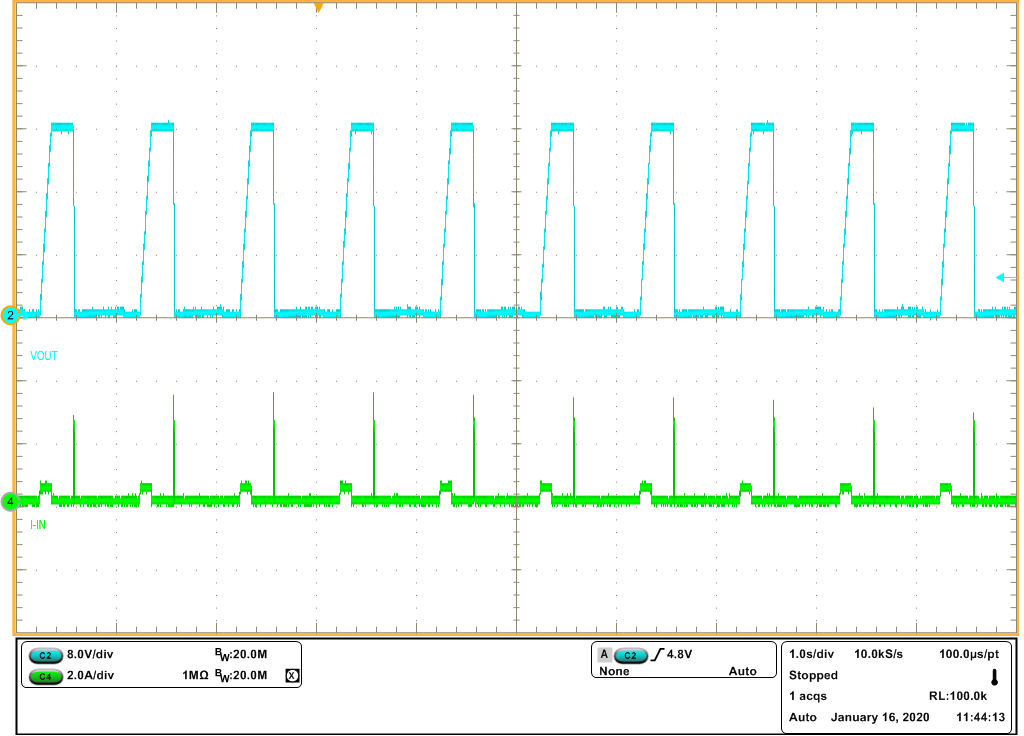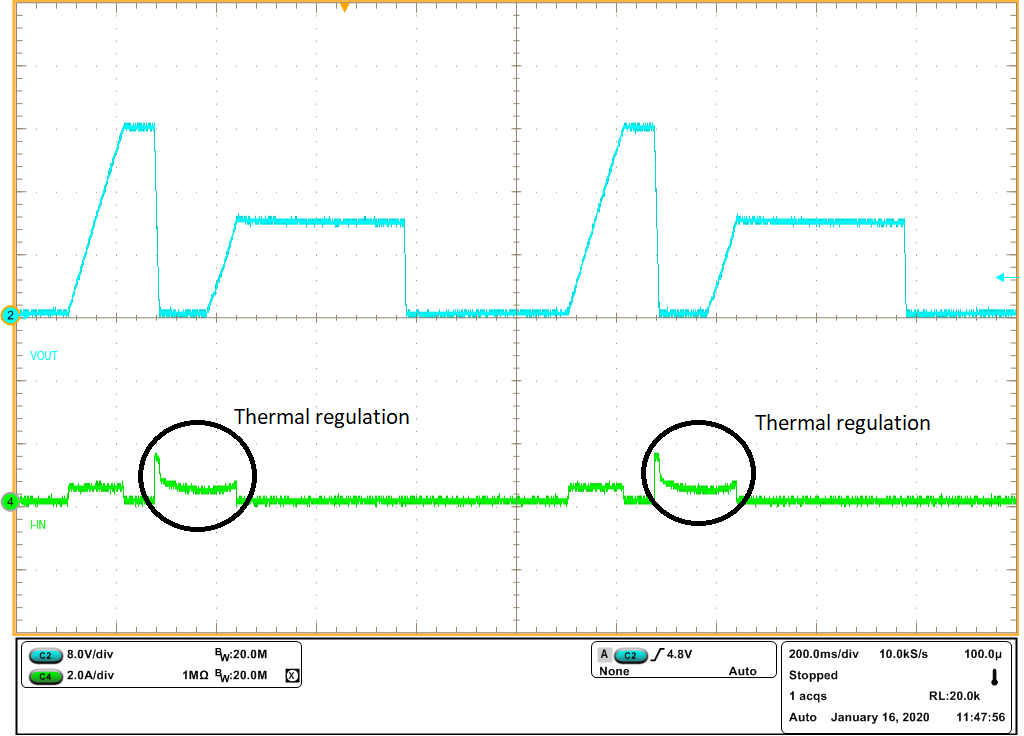Hello Team,
The e-fuse is supplied with at 24V supply. Ilim is set to 2.6V ,VOV to 15.7 and Plim to 100W. The schematic is in the following:
Fault resistance R223 is removed.
I made a test with the device loaded with a 4 Ohm resistance. As expected the device enter auto-retry mode and continue to assess the presence of a short-circuit. This is shown in the next figure where in red is the output current and in yellow the output voltage. Till here everything works as expected.
In order to verify that the device can effectively detect the end of the short-circuit condition, the load resistance is pulsed (figure) in a asynchronous manner.
In the figure three different situations are depicted.
1) No short circuit is present , hence current doesn’t rise and output voltage raises to 24 V. The load commute and short circuit is detected.
2) Short-circuit is still present during autoretry. This fall back in previous expected behavior.
3) During autoretry, no short circuit is present. However the device output voltage don’t rise to 24V, but to some intermediate level.
I actually can’t explain point 3.
In datasheet, you say that the UL certification for the device is still pending. Do you have an idea on when you can confirm that the device will be UL certified?
Thanks and Best Regards,
Hans


